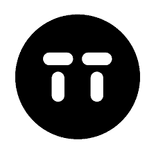At least 20 books published in 2024 are clearly made with or with the help of AI. In some cases, it is explicitly stated, in some cases, it is even a conscious experiment. In other cases, it is "highly suspected AI".
Right now, AI is as bad as it can get. What we see right now is a kind of experimental pioneering work, it will only get better, probably.
At the same time, AI is now built into various image processing programs – if you use Photoshop or Illustrator, is it AI or not? The definition of AI is becoming increasingly blurred, thinks Amanda Idberg. But a human hand still raises the quality.
Fingers
It is in the images that AI usage is most evident. Often, it involves photorealistic illustrations where, for example, hands may have gotten more fingers.
The Children's Book Institute also identifies a specific AI aesthetic: big-eyed children with perfectly curly hair and light skin. How great is the risk that AI lowers the quality of children's books in general?
I wouldn't say that the quality has decreased across the entire publication, absolutely not, but where we see that AI has been used, there are things that one can wonder if an illustrator would have let through.
In addition to increased AI usage, the Children's Book Institute notes that the easy-to-read young adult novels often depict boys in rural areas and deal with tractors, revenge, murder, gangs, and war.
This says something about who the intended reader is for these books. The traditional young adult novels, on the other hand, deal with girls in big cities, exploring identity and relationships – I hope this is just a coincidence, that it doesn't get cemented.
Lifestyle
Swedish students' reading ability has deteriorated. The Children's Book Institute is therefore conducting a review of how reading is portrayed in children's and young adult books. Most common is that books and reading are associated with magic, horror, and mysteries.
Being a reader often involves an alternative identity, which creates distance, primarily from peers, but also from parents, who would prefer their children to be "like everyone else", emphasizes literature scholar Tuva Haglund.
The emphasis on reading as an identity is something we can also see in the digital reading culture, for example, on Booktok, where humor and jargon are often used to portray reading as a lifestyle. Roughly: you'll only understand this if you're a reader.
2,182 printed children's and young adult books were published in 2024, which is the same level as in recent years. The publication of young adult books also remained at the same level as in 2023, after several years of declining titles.
The sale of printed children's and young adult books increased in 2024, according to the Swedish Booksellers' Association and the Swedish Publishers' Association's sales statistics, which is believed to be due to the state subsidy of 176 million kronor to Sweden's municipalities for the purchase of printed fiction and non-fiction books for elementary school students.
It is books for children up to 12 years old that dominate sales, and books for the age group 6-9 years old sell the most, while young adult books account for a very small part.





